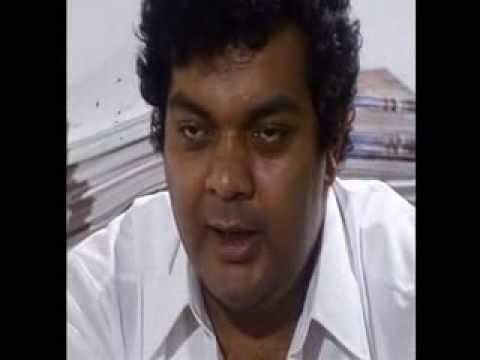Name John Newfong Role Journalist | Died May 30, 1999 | |
 | ||
John newfong 1972
John Newfong (3 November 1943 – 30 May 1999), Aboriginal Australian journalist, a descendant of the Ngugi people of Moreton Bay and writer, was the first Aboriginal person to be employed as a journalist in the mainstream print media.

Newfong was born in Wynnum, a suburb of Brisbane, Queensland, in 1943. His father Ben "Archie" Archibald Nu Fong was a Queensland champion heavyweight boxer, and his mother Edna Crouch played in the Australian women's cricket team which played England in 1935. Newfong's family soon moved to North Stradbroke Island, but when Newfong was five, the family returned to Wynnum where he attended the local school, and later, Wynnum High School. After graduating, he wanted to study Law however entrance to university at the time would only allow Aborigines to undertake education degrees to become teachers; and only if they choose to teach in a community. He instead worked in Mount Isa as a miner in 1965 before returning to Brisbane to campaign for the 1967 Referendum. Later, he trained as a journalist at The Sydney Morning Herald newspaper in Sydney.
Newfong was campaign secretary for the Queensland Council for the Advancement of Aborigines and Torres Strait Islanders, the state affiliate of the Federal Council for the Advancement of Aborigines and Torres Strait Islanders (FCAATSI) in the leadup to the 1967 Aboriginal referendum. He had joined the Queensland council in 1961, and was soon promoted to the federal council. Soon after the referendum, he was offered a job at The Sydney Morning Herald newspaper, and later worked at The Australian. In 1970, he was elected as the general secretary of FCAATSI.
In 1972, Newfong was made the "chief spokesperson" for the Aboriginal Tent Embassy on the lawns of Old Parliament House in Canberra, where his media contacts and experience in the Canberra press corps were crucial in establishing a public image for the embassy. Although he resided at the embassy from February until July and was quoted frequently in the Australian and overseas press, he is best remembered for his quote, "The Mission has come to town".
Later that year, he continued to work as a journalist, between 1972-1973 and 1979-1980 he was editor of Identity, an indigenous Australian magazine funded by the Aboriginal Publications Foundation. He was a board member of the Aboriginal Arts Advisory Committee between 1969-1970 and he a Board member of the Aboriginal Publications Foundation.
Newfong was one of the first people in the Aboriginal movement to realise the importance of international pressure on Australia, especially from the African nations. During the 1960s he was heavily influenced by overseas independence movements in removing colonial overrule. He was the only Aboriginal speaker at the Black Moratorium to speak specifically about the influence multinational corporations had on the Australian government in relation to Aboriginal policy.
Later, Newfong was the elected member for the South East Queensland/Brisbane metropolitan of the National Aboriginal Conference (NAC) in 1977, and was a member of its executive until 1979.
Newfong was the public relations director of the Aboriginal Medical Service in the Sydney suburb of Redfern. He also did public relations work for Channel Nine (Cyclone Tracey telephon), the Society for Crippled Children, National Aboriginal and Islander Health Organisation, and for the Aboriginal Development Commission. Writing in The Australian in 1986, Newfong defended Aboriginal legal services from attacks by the Police Federation of Australia, who criticised government funding for those services.
Professionally, Newfong experienced tremendous pressure from political allies such as Charles Perkins and Chicka Dixon to neglect its own interests to further the interests of Aboriginal people. This is demonstrated by his involvement in the 1972 Aboriginal tent embassy that marked the end of Newfong's full-time career in Australian journalism. His political activism also exposed him to jealousies within the Aboriginal movement that made him a target, particularly when seeking employment in media organisations throughout his working life. He was particularly mindful of the rise of professional class of Aboriginal leader that arose from within the new bureaucracies that emerged in the wake of the Commonwealth's formal entry into Aboriginal Affairs in the early 1970s. Despite these obstacles, Newfong continued to work as a specialist writer and commentator between 1981 until his death.
In 1993, Newfong was a lecturer at James Cook University in Townsville, where he taught journalism and media studies. The following year, Newfong was briefly Aboriginal policy officer for the Australian Medical Association in Canberra. He later worked as a speech writer for the NSW Government on Aboriginal issues. Until his death in 1999, Newfong lectured at various Australian universities on indigenous health and government relations.
